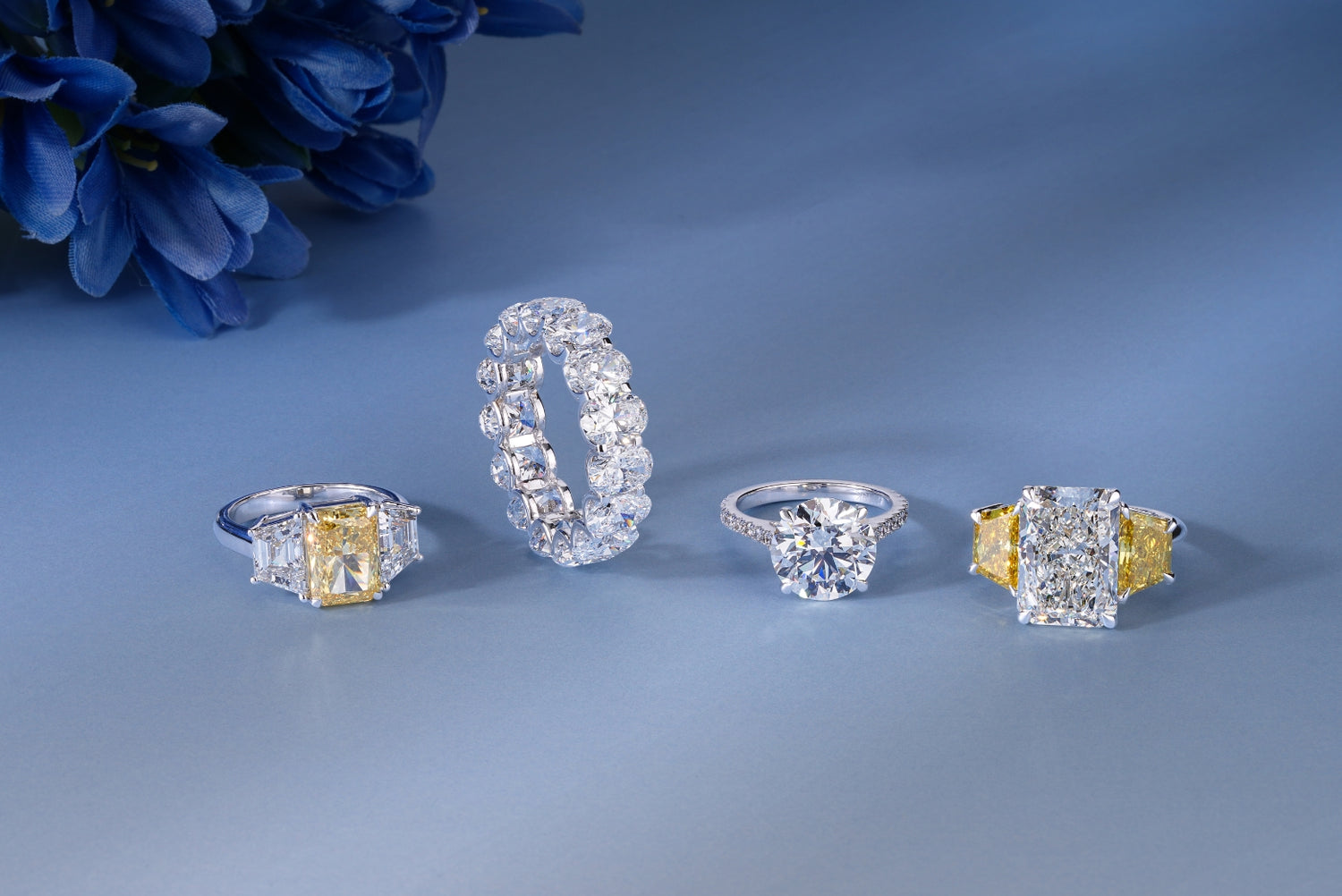Diamonds—sparkly, beautiful, and timeless. But have you ever wondered how these stunning gemstones are made? Especially when it comes to lab-grown diamonds, the process behind their creation is truly fascinating. These diamonds aren’t just pretty; they’re the result of some serious science and technology.
In this blog post, we’ll break down the process of how lab-grown diamonds are made, and why they’re becoming a popular choice for modern couples, fashion lovers, and anyone looking for an ethical, affordable option. Let’s dive into the science behind the sparkle!
What Are Lab-Grown Diamonds?
Before we get into the "how," let’s first clarify what lab-grown diamonds actually are.
Lab-grown diamonds, also known as synthetic diamonds, are real diamonds. The only difference is that they’re grown in a controlled laboratory environment rather than deep within the Earth. They have the same physical, chemical, and optical properties as mined diamonds. So, when you’re buying a lab-grown diamond ring or a pair of trendy diamond earrings, you’re getting the same high-quality gemstone you would with a natural diamond—minus the environmental and ethical concerns.
The Two Main Methods: HPHT & CVD
Now, let’s get into the science! There are two main methods used to create lab-grown diamonds: High Pressure High Temperature (HPHT) and Chemical Vapor Deposition (CVD). Both processes mimic the natural conditions under which diamonds are formed, but they each use different techniques.
1. High Pressure High Temperature (HPHT)
This is the older of the two methods and is very similar to how diamonds form naturally deep within the Earth. Here's how it works:
-
Step 1: A tiny diamond seed is placed inside a chamber filled with carbon.
-
Step 2: The chamber is then heated to extremely high temperatures (about 1,500°C) and pressure is applied (around 1.5 million pounds per square inch).
-
Step 3: Over time, the carbon melts and bonds with the diamond seed, forming a larger diamond crystal.
Fun Fact: HPHT can create diamonds in a variety of colors, including colorless, yellow, and even blue!
2. Chemical Vapor Deposition (CVD)
CVD is the newer and more commonly used method for creating lab-grown diamonds. This process is a little different from HPHT, but it still results in stunning diamonds.
-
Step 1: A thin slice of diamond (called a seed) is placed in a vacuum chamber.
-
Step 2: The chamber is filled with a gas mixture, usually methane and hydrogen.
-
Step 3: The gases are heated, causing the carbon atoms to separate and bond with the diamond seed. This slowly builds up a crystal layer by layer.
Why CVD is special: CVD diamonds tend to have fewer impurities because the process is more controlled. It’s also great for creating larger diamonds and diamonds in a variety of shapes.
Why Lab-Grown Diamonds Are So Popular
The science behind lab-grown diamonds is impressive, but why are they so popular? Here are a few reasons:
1. Ethical & Sustainable
Lab-grown diamonds are the ethical choice. They don’t involve any mining, which means no environmental damage or human rights concerns. Plus, because they’re made in a controlled environment, you can feel good about the story behind your lab-grown diamond jewellery.
2. Affordable Luxury
One of the biggest draws of lab-grown diamonds is that they offer the same sparkle and quality as natural diamonds but at a lower price. So, you get more value for your money, whether you're shopping for an engagement ring, a wedding band, or just a special piece of jewellery.
👉 Looking for affordable jewellery in Australia? Check out Pear Jewels’ range of stunning lab-grown diamond pieces.
3. Same Beauty, Same Sparkle
Whether you choose a lab-grown diamond or a mined one, you’re still getting a diamond with the same hardness, brilliance, and fire. It’s the perfect choice for anyone who wants a sparkling gem that lasts a lifetime.
Real-Life Example: The Journey of a Lab-Grown Diamond
Let’s take a look at how a lab-grown diamond ring comes to life:
-
Designing the Ring: It all starts with a design. Whether it’s a classic engagement ring or a custom piece, the first step is planning the perfect setting.
-
Creating the Diamond: Next, the diamond is created using one of the methods we talked about. This can take weeks or even months, depending on the size and quality of the diamond.
-
Setting the Diamond: Once the diamond is ready, it’s set into the ring (or bracelet, pendant, etc.) of your choice. At Pear Jewels, our expert craftsmen ensure that every piece is perfectly made.
-
The Final Sparkle: After everything is set, the piece is polished, inspected, and ready to shine—just like a natural diamond.
Lab-Grown Diamonds: The Future of Jewellery
Lab-grown diamonds are here to stay. They’re changing the way we think about diamonds—making them more accessible, more sustainable, and more beautiful than ever before. Whether you’re shopping for trendy pearl earrings, a lab-grown diamond wedding band, or just a stunning gift, these diamonds offer the perfect balance of luxury and ethics.
Ready to explore lab-grown diamonds for yourself? Visit Pear Jewels to browse our collection of stunning, ethical, and affordable jewellery.




